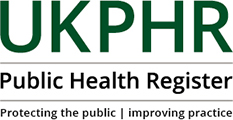May the workforce be with you
A look forward to the public health workforce of the UK in 2016
It is likely that the four Health Departments of England, Northern Ireland, Scotland and Wales will be working on their public health workforce strategies and plans in 2016. What is not yet clear is whether they will be producing individual workforce strategies or a single, over-arching UK strategy. I would prefer the latter given the commonalities in terms of public health training and professional qualification, regulation and standards of practice.
Some might ask whether we need a discrete public health workforce. My answer to that would be an emphatic yes! Those of us who see the need for, and the value of, a competent, skilled and dedicated public health workforce should start speaking up now. My view is that public health and wellbeing is a critical ingredient for a society’s economic, environmental and social success. It goes much wider than the stated need in the NHS Five Year Forward View, but even so, Simon Stevens’ support for what we seek to achieve in public health is incredibly welcome.
How shall we measure the success of the public health workforce? Success certainly has to be measurable, for example by reference to Public Health Outcomes Framework and/or other health and wellbeing and health inequalities data. And how shall we achieve success? I believe that the core public health workforce cannot succeed working in isolation from others. Additionally, this core group has to be the driving force behind interventions by many other groups including local authorities’ services, local authorities’ representatives (Councillors), local authorities’ partner organisations, NHS organisations, CCGs, employers more generally, communities and their community ties including third sector and not-for-profit organisations.
Crucially, with such small numbers in the core public health workforce, the wider workforce has to be engaged, coordinated and led. I found the Cumbrian floods, or rather, the response to Storm Desmond, instructive on this score. In early December 2015 flood waters caused damage to over 6,000 properties and disrupted power to 60,000 properties. Police, fire and ambulance services were supplemented by Mountain Rescue and Armed Forces in the rescue phase. Local authority and Environmental Agency workforces joined in for the clear-up and repair phases.
A spirited team of health visitors and school nurses was soon out visiting local children and families affected by the floods publicising key health messages in conjunction with agencies such as the County Council, Red Cross and voluntary groups. They gave expert public health advice relating to the impacts of the flooding, worked with children’s centre providers to give children who lost their homes a safe, family-friendly place to go during the day and gave safety advice to families living in flooded properties and in temporary accommodation.
So in order to be successful all the time and in all settings, what does the public health workforce need to perform optimally? I have formulated my answer to this question as the four R’s: Recognition, resources, reinforcement and regulation.
Recognition – means that politicians, employers and potential partners know what the public health workforce does, values its work and helps promote its work.
Resources – means adequate funding for engaging the right numbers of people, supporting them in training and development and equipping them with the tools they need, including their share of funds for joint enterprises with partner organisations and communities.
Reinforcement – means backing for the work of public health professionals by wider workforce, partner organisations and politicians and the media; it means public information about what they do and prominence for the evidence on which they base their work; it means reliable evaluation of the outcomes of their interventions and the means to communicate them widely.
Regulation – means under-pinning good practice with a consistent public health system of recognition which assures partners, employers and the public of the competence of all members of the core public health workforce.
The existing, fragmented, regulatory arrangements hinder the public health workforce in securing the other three R’s. I say that it matters that some parts of the core public health workforce are regulated and others are not. It matters that those who are regulated are regulated in various regulatory homes with different systems and maybe different levels of interest in public health practice specifically. What is the risk to the public when a strategically planned service like immunisation & vaccination or outbreak response goes wrong? Or practitioners delivering personal services one-to-one such as stop smoking or sexual health advice abuse their position of trust financially or physically? The level of regulation (none at all in some instances) does not always match the level of risk.
So I say that “Regulation” means a single regulatory home for those who carry out public health practice so as to emphasise that this is a single, skilful workforce and to attract recognition of such. It also assures the public, employers, commissioners of services, politicians and the media that a level of competence has been demonstrated, there are rules in place to maintain that competence and there is somewhere to go with a complaint or query about the appropriateness of a registrant’s conduct or competence.
I look forward to UKPHR and its registrants taking part in the 2016 debates across the UK that will surely precede the development of a new public health workforce strategy.



Comments are closed.